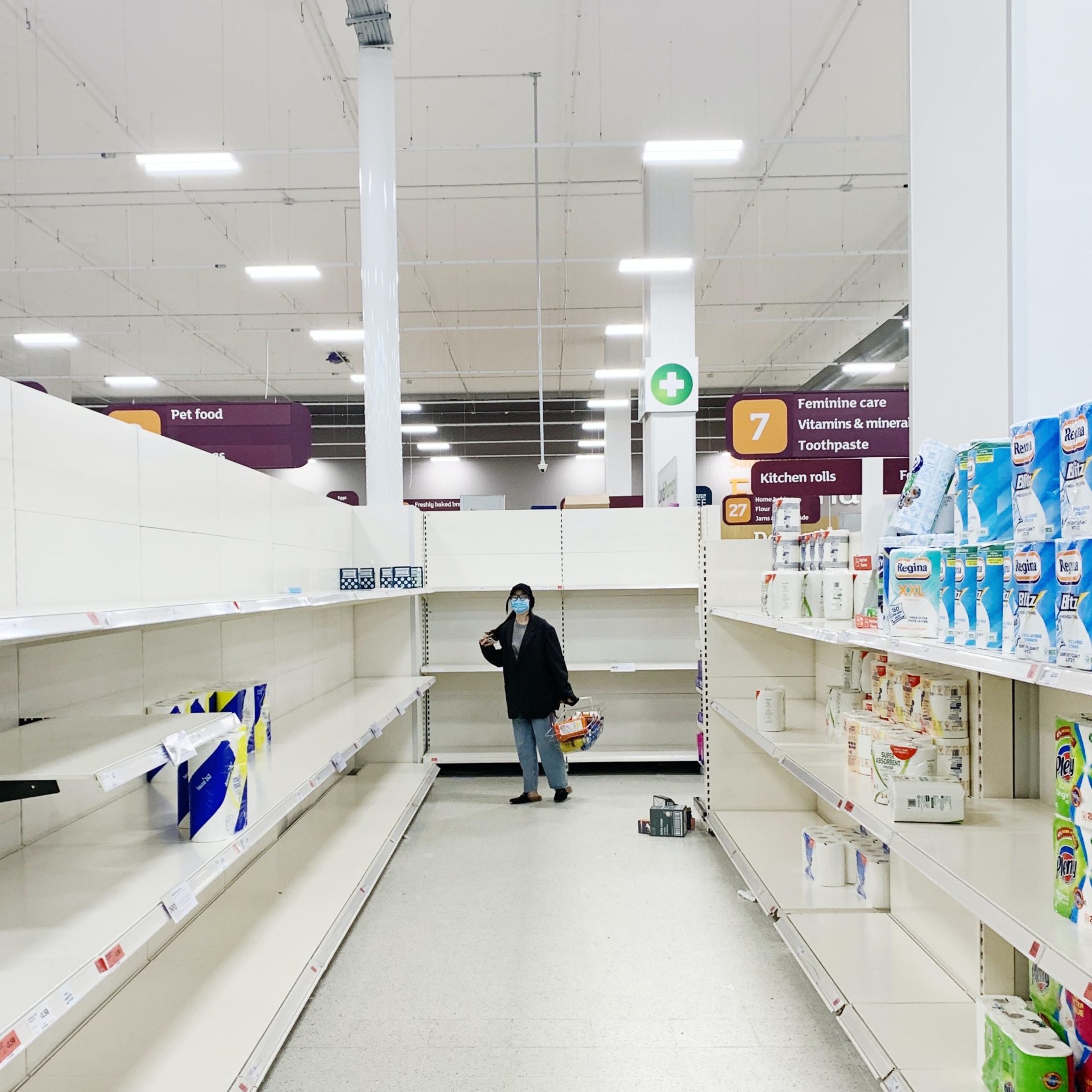A look at the data behind shopper behaviour amid the coronavirus outbreak
Over the last couple of weeks as the number of COVID-19 cases has risen in the UK, we’ve seen huge numbers of panic buyers clearing supermarket shelves.
So, if spend has remained relatively flat, why did shelves empty across the UK?...
People across the country stockpiled items such as toilet roll, rice and pasta despite urgent advice that this was not necessary.
It appears that this has eased off somewhat as shoppers see regularly restocked shelves and feel reassured by the government that they can leave their homes to buy food if needed.
Using rolling 14-day data from 1st February right up until yesterday (26th March), we can see how shopping spend and frequency has changed over the last six weeks.
Beyond a market and brand level, we are able to identify whether shoppers are opting to do their grocery shopping online or in-store and if it is the latter, whether this is at a supermarket or their local store.
Average grocery spend: Chart 1 (in slides below)
The impact of COVID-19 on average weekly grocery spend was minimal, due to the items people seem to be panic-buying and stockpiling being low-ticket i.e. toilet roll, rice and pasta.
That being said, there was an increase in average spend towards the end of February; the data shows that large in-store shops and online orders have been the forms of shopping most affected.
Grocery shopping frequency: Chart 2 (in slides below)
So, if spend has remained relatively flat, why did shelves empty across the UK?
BrandVue Retail data shows that the frequency of visits to the shops, whether online or in store, saw a pronounced increase from the 23rd of February for a two-week period. While there was an increase in the frequency of shop visits, people were spending roughly the same amount— just on a much more regular basis.
The online “spike” was maintained for two weeks, until the 7th March, after which levels return to the norm. This comes as no surprise following recent dismay at weeks of fully booked delivery slots, hours of virtual queuing and countless website crashes due to a huge surge of online orders following the acceleration of the COVID-19 pandemic.
It’s likely that many people aren’t going to place further food orders until their original orders have been delivered, even if that’s two weeks later than expected. And for those that have been panic-buying, cupboards are already fully stocked so there’s no need for them to make a trip to the supermarkets or schedule a food delivery.
Product category consideration: Chart 3 (in slides below)
With groceries and toiletries being regular weekly purchases, consideration levels have remained high for both categories through the period.
Pet food/supplies have seen the biggest increase since the period of self-isolation for many began (23rd Feb and onward).
Difference in spending in local stores vs supermarket chains
Product purchase: Brand 1: a local grocery store
As the first chart below illustrates, Brand 1 – a local store – initially saw a sharp increase in its sales of toiletries. At the beginning of March, people were three times more likely to buy toiletry products. As panic began to set in, consideration remained steady while people bought significantly more. Groceries also saw a steady rise despite consideration remaining level.
As people became more accustomed to lockdown rules and panic-buying slowed down, purchase behaviour reduced dramatically to even lower levels than previously. It’s likely that people’s cupboards are now full, and they have enough supplies for the next week or so. Let’s see if there’s another spike as rations start to run out in early April.
The data illustrates the role local corner stores play in our lives. While they have historically been used for impulse and emergency buying, at the peak of the “pandemic panic” they were being used more to buy items that supermarkets may have run out of due to stockpiling.
Product purchase: Brand 2: supermarket store
BrandVue shows that supermarkets are much more commonly used for toiletries and grocery shopping than local stores. The purchase behaviour still saw an increase through March for both product types, though not as pronounced as the local chain.
As illustrated in the grocery store data, purchasing levels are returning to more normal levels as the public begins to feel assured that supermarkets will keep restocking shelves and they don’t have to stockpile.
BrandVue Retail will be tracking consumer brand perceptions and shopping behaviours throughout the ongoing crisis. Get in touch to learn more about we can help you.








